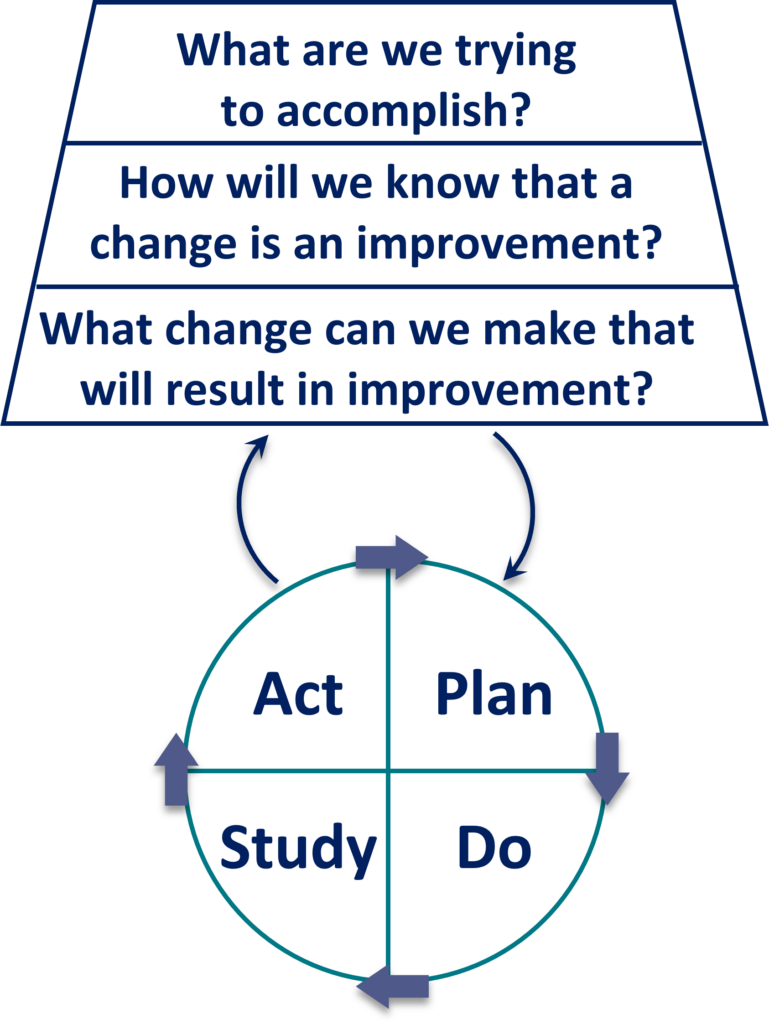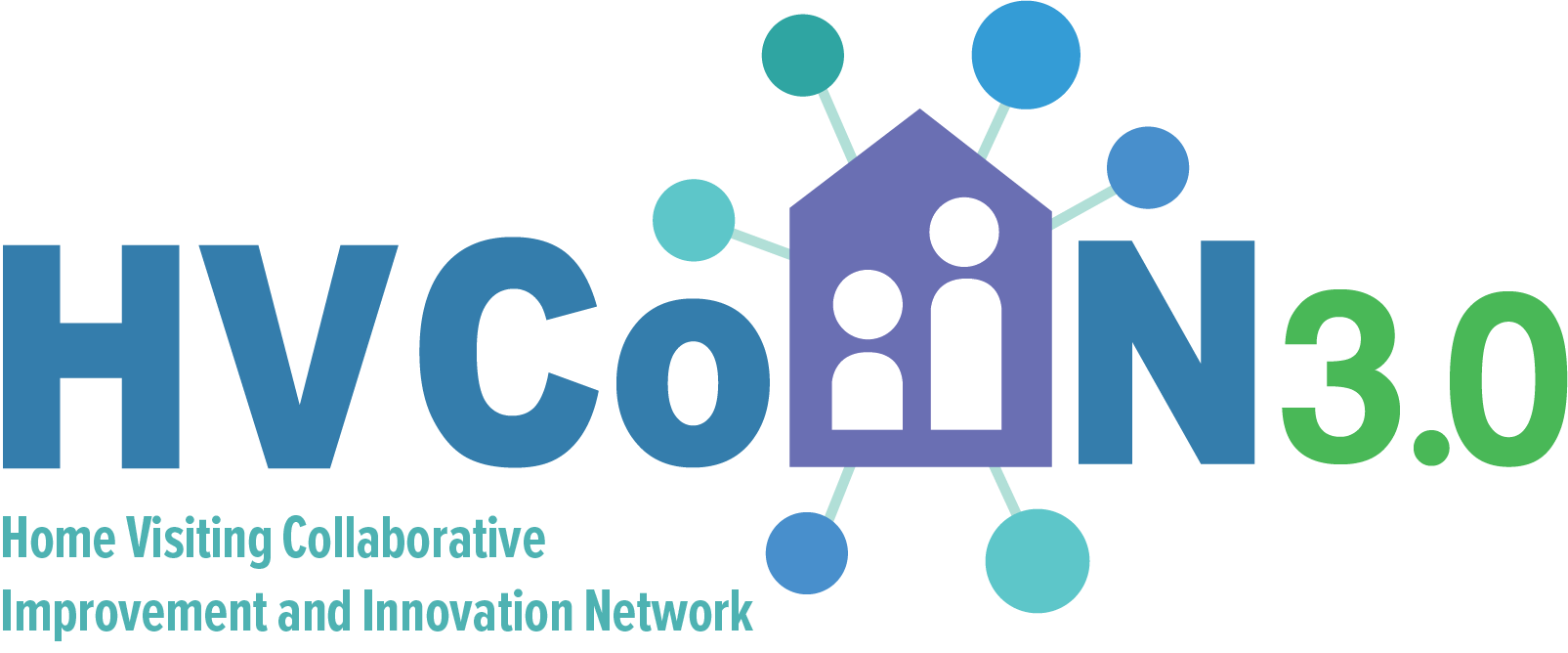The Breakthrough Series Model
- The Breakthrough Series (BTS) is a collaborative learning model developed by the Institute for Healthcare Improvement (IHI) to teach organizations how to design, manage, and guide a successful collaborative. Organizations learn from each other and from recognized experts to achieve breakthrough changes in topic areas where they want to make improvements.
- IHI originally developed the BTS model to help health care organizations make “breakthrough” improvements in quality. Why? Because there is often a gap between what we know (research) and what we do (practice).
- The HV CoIIN was the first national initiative to use the BTS model to accelerate improvements in outcomes for children and families served by the Maternal, Infant, and Early Childhood Home Visiting (MIECHV) Program. The graphic below illustrates how the HV CoIIN uses the BTS model for collaborative learning:

Continuous Quality Improvement
- The Health Resources and Services Administration (HRSA) of the US Department of Health and Human Services characterizes continuous quality improvement (CQI) as systematic actions that lead to measurable improvement in health care services and the health status of identified groups.
- The Model for Improvement (MFI), developed by Associates in Process Improvement, is a simple but powerful approach for carrying out improvement efforts. It has been successfully used by health care organizations, educators, by community-based organizations, and in many other organizational settings, to improve various processes and outcomes.

Image: Model for Improvement
The MFI combines three key questions and a series of testing cycles. The three questions help teams identify:
- Specific and measurable aims (What are we trying to accomplish?)
- Measures to track progress (How will we know that a change is an improvement?)
- Key changes that will result in improvement (What changes can we make that will result in improvement?)
- Teams participating in the HV CoIIN then use Plan-Do-Study-Act (PDSA) Cycles to apply the key changes in their organizations.
